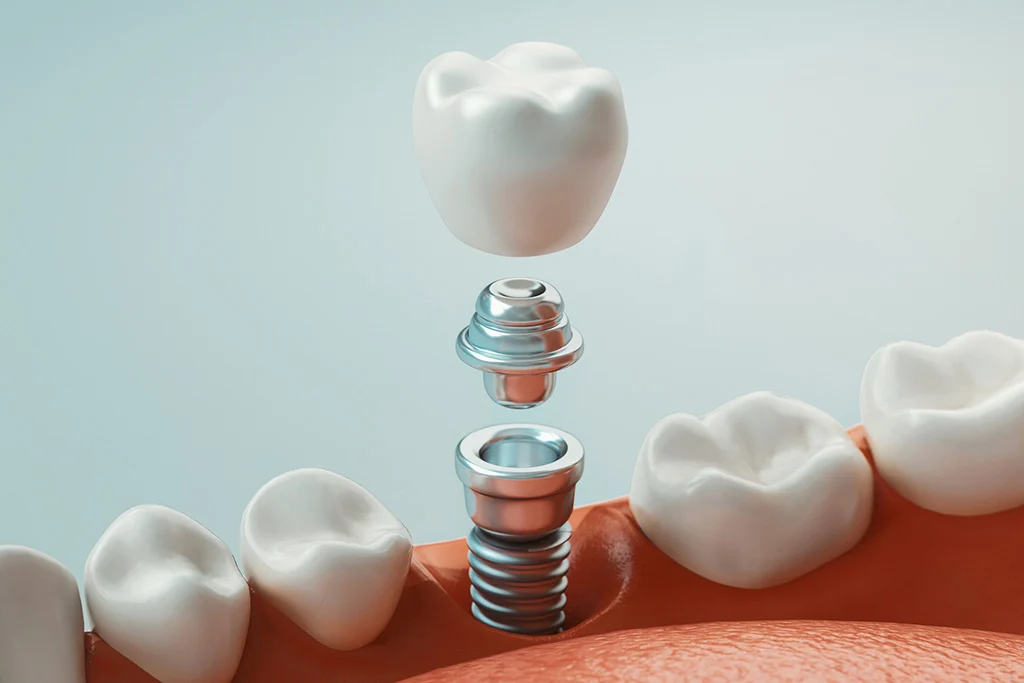Minimally invasive dental implant
Hong Kong dentist WhatsApp answers questions about minimally invasive dental implants
When to get minimally invasive dental implants
When to consider minimally invasive dental implants

Few missing teeth
For example, if only one tooth is missing, minimally invasive procedures can quickly repair it, resulting in a small wound and rapid recovery.
Good gum and bone condition
With sufficient bone volume and healthy gums, no bone grafting or gingival transplantation is needed.
Older but healthy
For those who are afraid of pain or do not want to disrupt their daily lives, and who do not want to endure the trauma of traditional surgery, minimally invasive surgery results in less bleeding and less swelling.
High requirements for appearance
Minimally invasive techniques can preserve the shape of the gums, resulting in high postoperative aesthetics, and are suitable for anterior dental implants.
Minimally invasive dental implant fees
2025 Minimally Invasive Dental Implant Prices
The price of minimally invasive dental implants is influenced by a variety of factors, including the complexity of the surgery, the implant materials used, and the experience and expertise of the surgeon. Patients should inquire about specific costs and related issues during their consultation.
| Implant | Implant Fees |
|---|---|
| American Implant | Single $26,000 More than one $24,000 More than two $22,000 |
| Swiss implants | Single $32,000 More than one $30,000 More than two $28,000 |
| dental implant surgery | Dental implant surgery fees |
|---|---|
| Sinus augmentation surgery | HKD$15,000+ |
| Minimally invasive dental implants | No extra charge* |
Dental implants (per tooth) include bone grafting and artificial crowns.
*The dentist will perform either minimally invasive or conventional dental implants depending on the patient's condition.
Minimally invasive dental implant procedure
The process of minimally invasive dental implantation in Hong Kong from examination to completion
Minimally invasive dental implants, also known as "flapless operation," are an advanced dental surgical technique designed to achieve better treatment results by minimizing surgical incisions and invasiveness.
Traditional dental implantsand minimally invasive dental implants respectively
The biggest difference between traditional dental implants and minimally invasive dental implants lies in the surgical method, degree of trauma, recovery speed, and applicable patients.
| Comparison direction | Traditional dental implants | Minimally invasive dental implants |
| wound size | Large wound | Small wound |
| Surgical risks | Wounds exposed to air for extended periods are more susceptible to infection. | The surgery is quick and less likely to result in infection. |
| Surgery time | longer | shorter |
| pain and swelling | More prone to swelling and pain | Lower levels of discomfort such as swelling and pain |
| Does bone grafting need to be done? | When there is a defect in the alveolar bone, it can be repaired at the same time. | When alveolar bone is insufficient, large-scale bone grafting is not possible. |
| Doctor's medical skills | normal | High requirements |
Common problems with minimally invasive dental implants
Minimally invasive dental implantation, through the use of specialized instruments, achieves precise implant positioning, which not only minimizes surgical wounds but also helps patients recover faster.
- For patients with severe bone loss
- Severe periodontal disease
- People taking anticoagulants or osteoporosis medication
- Immune system problems or cancer patients
- Patients who have received radiation therapy
- Pregnant or breastfeeding women
- elderly people with poor health
- Patients requiring bone grafting or gum reconstruction
Yes, it's necessary. After minimally invasive dental implantation, a crown is usually required. This is the final step in the entire implantation process and is crucial for restoring normal chewing and aesthetics. The implant is merely a replacement for the tooth root; the implanted bone is just the "foundation." A crown is needed on top to complete the tooth. Furthermore, the crown can withstand biting forces, allowing you to eat normally, and it also protects the implant, distributes pressure, and reduces the risk of implant damage.
Minimally invasive dental implant surgery is performed under local anesthesia and is virtually painless. Mild swelling or discomfort may occur post-surgery, but this usually subsides within 1–3 days.
Normally, patients can drink water 6 hours after minimally invasive dental implant surgery, eat soft foods within 1-2 days, and resume a normal diet after about a week.
- Regular follow-up appointments are necessary for the dentist to check the condition of the implants.
- In the initial stages, avoid hard, crunchy, or sticky foods to prevent putting pressure on the dental implants.
- Avoid smoking, as it can interfere with the healing process and increase the risk of infection.
- Avoid using your teeth to open bottles or bite hard objects to prevent damage to dental implants.
- If you experience persistent pain, swelling, or bleeding, contact your dentist immediately.
Schedule a dental appointment
You can book your dental appointment and minimally invasive implants at Qi Ren Dental Center online in advance. For any dental questions, you can also WhatsApp us first, and a dentist will answer them personally.
